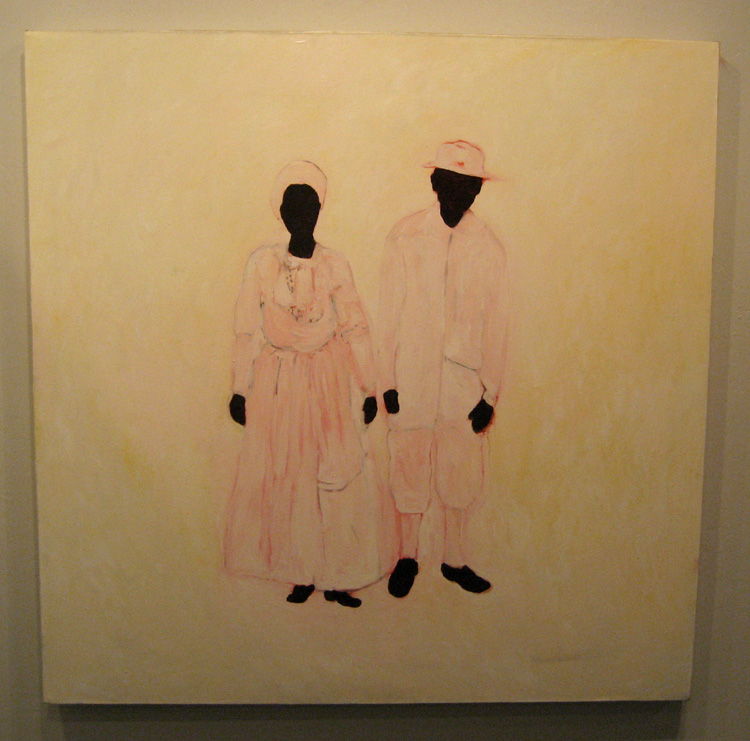Source: WTL digital photo of canvas in "Imagining of Place" art exhibition at Santa Fe College, 2009.
Permission: Nereida García Ferraz's email to WTL March 2, 2009.
Image: "From Cabildos;" oil on canvas; 64" x 64."
Comments: This painting was originally placed on the left of two large paintings (the other was "Todo en construcción:" García Ferraz #11 ) on the back (west) wall directly opposite the gallery's entrance door. In Spanish, generally speaking, a cabildo is a town hall, town council meeting, chapter in a cathedral, or a chapter in a social "brotherhood" association. In particular, in Cuba, Cabildos de nación (i.e., ethnic brotherhoods) were African slave associations created at the end of the 16th century. They were modeled on the church fraternal organizations (cofradías), whose origins were in Sevilla in the 14th century. Each cofradía or cabildo had (has) its own Catholic saint as a patron. The first known cabildo in Cuba was the Cabildo Xangó (or Changó; 1568). Changó is a sky father god in the Yoruba religion of, mainly, Nigeria, Africa. He is also the god of thunder and lightening, and he is thought to be the first ancestor of the Yoruba royal lineage. This African religion is also the origin of the Lucumí Afro-Cuban religion, and Candomblé, the Afro-Brazilian religion (see: => Bahia #12). The Yoruba religion in Cuba and other places in Latin America fused with Catholicism; this fused religion is known as Santería (or La Regla de Ocha or Lucumi or La Regla Lucumi).
Humanities Questions: (A) Compare and contrast this painting with the previous three works, which are grouped more or less thematically and pictorially. Judging by the title, this is a separate work unrelated to "Arrival." (B) What are the subtle differences you see that make this a work independent of García Ferraz #4? (C) Describe the Afro-Cuban aspects of this painting. (D) What do you perceive as the artist's commentary or attitude about the topic of cabildos?

